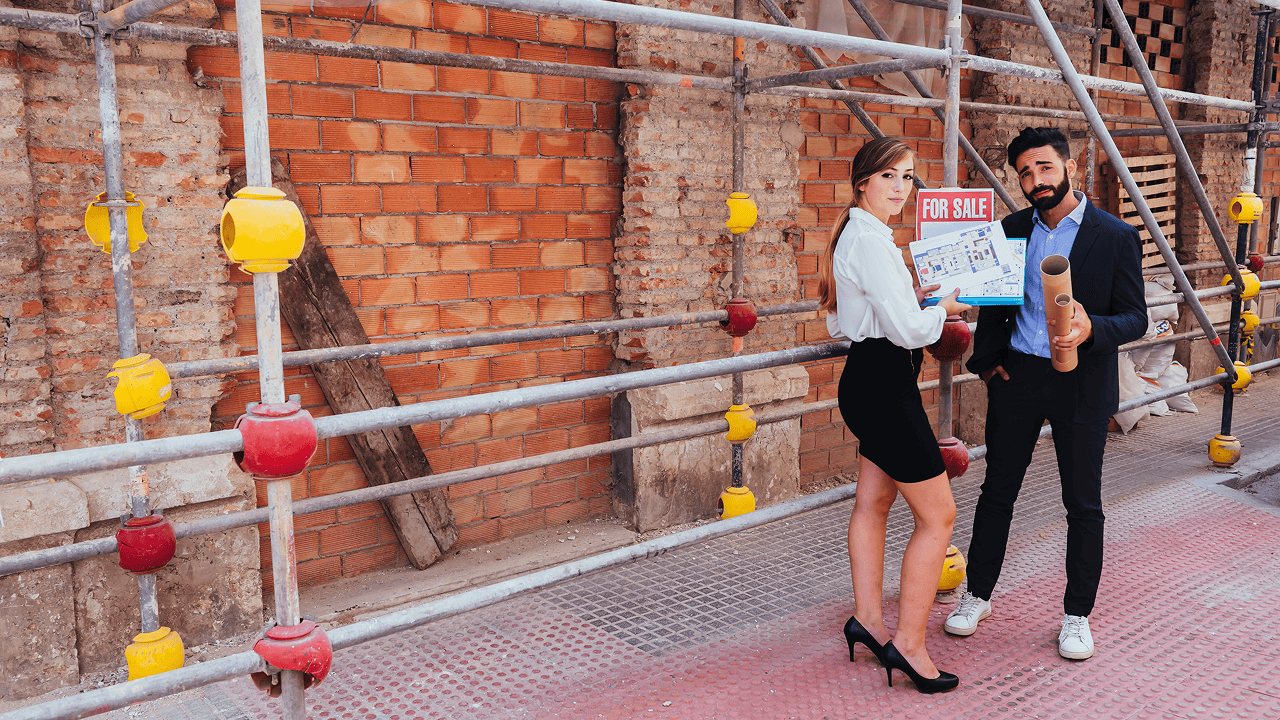
Tracking Delaware’s Business Openings Closings Expansions and Neighborhood Spotlights
Delaware’s business heartbeat is measured in small, steady changes that add up to real momentum. A hand‑painted “coming soon” taped to a window on Market Street, a soft‑open notice in Newark that turns a quiet side street into a new evening loop, a Lewes bakery that doubles its ovens and cuts the Saturday line in half, a Smyrna repair shop that keys a final invoice after fifty years, a founder who trades a lab bench for a storefront and decides to teach as well as sell—each of these moments carries more than a headline. In a compact state where distance is short and relationships are long, Community & Business News is the civic diary that captures openings, closings, expansions, spotlights, and interviews with care. The goal is practical clarity over hype, human context over rumor, and a statewide lens that treats every county as part of one conversation.
Why this beat matters in Delaware
Community & Business News is where everyday life and local economics actually meet. It tells a parent which café opens early enough for a pre‑school drop‑off coffee, guides a contractor toward a reliable supplier when an unexpected job hits, helps a visitor find a hotel that sleeps quietly in July, and gives a longtime resident a reason to revisit a block that feels different than it did last summer. Because the 302 is small, decisions ripple quickly. A well‑timed opening reshapes foot traffic; a closing shifts routines; an expansion adds jobs and apprenticeships; an interview demystifies a craft and sends a teenager to a career day with new questions. Reporting this beat well is service work. It lowers the friction of living and doing business here, and it turns local knowledge into shared knowledge.
How to cover openings without guesswork or gloss
An opening story begins long before a ribbon is cut. The first duty is verification. Confirm the lease or purchase, confirm permits, confirm target dates with the owner or project manager. Readers need the details they will use tomorrow, not adjectives they will forget. That means naming the exact address that navigation apps recognize, describing what the business actually does in plain language, and printing hours as they will be posted on the door. Context turns a notice into news. Explain what occupied the space before and how the newcomer fits the block’s rhythm. If a café lands next to a bookstore and across from a daycare, spell out how mornings might change. If a studio opens on an upper floor, note the elevator access and what to expect on arrival. Openings are also about expectations. A soft open is a rehearsal, not a debut; tell readers to expect shorter menus, training moments, and slower pace, and invite them to treat the week as a chance to help a team find its stride.
Closings deserve accuracy and empathy in equal measure

A locked door can mean many things. Retirement after a long run, a relocation that solves parking and access problems, a lease dispute, a strategic pause for renovations, or a real failure that hurts. The reporting posture is the same: call the owner, the landlord, or the property manager and confirm facts. Then answer the questions customers actually have. What happens to gift cards and deposits. Will warranties be honored and by whom. Are employees being offered roles elsewhere in the owner’s portfolio. If a move is underway, where will the new door be and when is the realistic opening window. Closings are also memory work. Acknowledge what the room meant to regulars and what routines will change. In the 302, that acknowledgment is not sentimentality; it is accuracy. Finally, look forward. Ask the landlord about a timeline for marketing the space and permits in flight. A closing that points clearly to a next chapter keeps a corridor’s confidence intact.
Expansions are Delaware’s quiet vote of confidence
When a bakery doubles its square footage, when a pediatric practice adds exam rooms and brings on a bilingual nurse, when a fabrication shop installs a second line and posts three apprenticeships, an expansion story should follow the supply chain of quality. Readers want to know how consistency will be protected. Will original staff rotate between locations, or is a new manager trained and in place. Will ingredients or parts be sourced locally or moved from a central facility. What is the plan for rush hours and delivery windows on a block that already strains. Expansions are also employment news. Name how many roles are opening, what skills are sought, and whether training is offered for entry‑level applicants. The best coverage also notices who helped. In Delaware, contractors, inspectors, and neighboring businesses often appear in each other’s stories. Crediting those relationships teaches readers that resilience is a local loop, not a slogan https://bestof302.net/building-fast-in-a-small-state-a-delaware-guide-to-startups-and-innovation/.
Spotlights make craft visible and useful
A good spotlight slows the reader down long enough to see how a thing is made or a service is delivered well. Follow a project from intake to finish. A Wilmington upholsterer walks through fabric selection, tack lines, and the invisible stitches that hold their shape after a hundred family dinners. A Dover hybrid mechanic explains why summer heat changes battery care and what a practical maintenance schedule looks like for a Delaware commute. A Rehoboth chocolatier demonstrates tempering by sound and sheen rather than thermometer alone. A Lewes brewer talks about water profiles and why certain styles sing in coastal air. These stories work best when they answer practical questions, publish real prices instead of dancing around them, and describe warranty and service recovery plainly so customers know what to expect after purchase. The bonus is community mapping. When a bakery turns a brewery’s spent grain into a breakfast loaf, when a café buys bread from a beach‑town oven, when a contractor chooses local millwork that fits historic frames, a spotlight becomes a quiet index of how value circulates inside the 302.
Interviews are the human engine of the beat
Let people speak in their own cadence, then edit for clarity without sanding off the truth. Owners, staff, neighbors, and customers each hold a piece of the story. Ask questions that require specifics. What went wrong in your first month and how did you fix it. Which mentor changed your mind when you were certain. What happens in your shop between six and seven in the morning before doors open. How do you teach new staff to care about the detail that actually decides whether a job holds up. Which week nearly broke you and what did you change so it would not happen again. Readers in Delaware can smell a slogan. They respond to process, to numbers they can understand, and to the kind of humility that shows someone took a risk and learned.
Ethics and independence are not optional extras
Trust in a small state is built or broken in small habits. Coverage should not be for sale and should not be shaped by access. If a newsroom attends a preview or a tasting, say so, then return anonymously and pay like any customer for the evaluation that informs what appears in print. Decline copy approval and offer fact checks instead. Publish corrections promptly and place them where readers will see them. Disclose relationships and recuse when necessary. Keep notes that summarize agreements rather than leaving memory to carry the load. These are simple disciplines, but they keep the line between journalism and advertising bright. Owners benefit from that clarity as much as readers do, because a trusted outlet lends weight to good news and fairness to hard news.
Balance north, central, coast, and the western edge

The Brandywine and Wilmington corridor has museums, gardens, dining rooms, and riverfront promenades. Newark mixes campus energy with wooded parks and a main street that can change mood block to block. Central Delaware blends heritage districts, aviation and event weekends, and the practical hotels and services that make big crowds function. The coastal ribbon from Lewes to Fenwick adds year‑round life that looks different in January than in July. Western Sussex builds, grows, ships, and repairs. A statewide beat has to move between all of these without reducing any of them to a trope. That does not mean counting stories like votes. It means noticing the blank spaces on the map in a newsroom’s head and deciding to go fill them.
Follow the calendar so readers can plan, not just react
Spring is permits, market returns, groundbreakings, rehabs, and hiring. Summer stress‑tests staffing and service recovery, especially at the beaches, and pulls a second economy of repair calls into motion—HVAC, refrigeration, lawn equipment, storm cleanup. Fall delivers planned openings and expansions that builders and inspectors advanced during longer days and turns town greens into festival grounds. Winter is maintenance season for many operators: remodels, menu rewrites, inventory clean‑ups, technology upgrades, and quiet training sessions that reappear as better service in March. Reporting that rides this cycle becomes anticipatory rather than reactive. A February look at seasonal job counts helps teenagers and parents plan. An August survey of off‑season hours keeps locals in the habit of walking downtown. A December explainer on stormwater or power upgrades makes budgets feel real the next time rain backs up at a familiar corner.
Make visuals and accessibility part of the service
Pictures should show work more than ceremonies. A first look belongs on the line where food is plated, beside the roaster as a curve is checked, at the bench where a seam is set, or in the lobby where a clerk greets a late arrival. A closing deserves an image that regulars will feel, like a chalkboard menu in familiar handwriting or the bell whose ring once moved the room. Captions should name people unless there is a good reason not to. Alt text should describe what is actually visible so screen‑reader users can share in the moment. Video can demonstrate motion that words cannot, but a clear paragraph that someone can scan while in a grocery line is still the backbone of this beat. Accessibility extends to information design. Hours, addresses, parking notes, elevator locations, and dietary or sensory accommodations deserve a clean sentence in the body, not a footnote.
Help owners share news in a way the newsroom can use
A good announcement is short and complete. It names the business as it appears on the sign and in records. It lists the precise street address and cross street. It describes the offering in one or two sentences with active verbs and concrete nouns. It states hours honestly and flags any soft‑open limits. It attaches two or three high‑resolution photos with names and roles. It includes a quote that says something specific about a decision rather than a generic vow to serve the community. It lists a phone number that a human will answer. When newsrooms receive messages in this shape, stories publish quickly and accurately, and corrections become rare.
Invite readers into the workflow
A tipline that actually yields answers is a public good. Encourage neighbors to send snapshots of papered‑over windows or signs taped to doors, then return those tips with verified stories rather than silence. Run periodic wish lists that ask what people want on a particular corridor and publish results that operators can read before signing leases. Ask for memories when a legacy business closes and assemble them into an archive that children can revisit. Revisit expansions three months after opening to count jobs created rather than letting promises float unmeasured. None of this requires a massive staff. It requires the habit of asking and the discipline of visible follow‑through.
Keep the line between news and promotion bright, then offer real help
Independence is non‑negotiable, yet the beat can still serve. Publish practical explainers about licensing, signage rules, accessibility basics, storm prep for storefronts, seasonal staffing, and tax‑time checklists for micro‑enterprises. Convene roundtables where owners, city staff, and residents face the same table and solve predictable frictions. Maintain a living directory that points readers toward credible winners and finalists from rankings and awards, but keep the profiles written in the same measured tone as any story. Profile immigrant‑owned and veteran‑run companies with equal curiosity and precision. The measure of service journalism is whether it lowers the cost of participating in a community, not whether it flatters any particular operator.
Measure your own impact so the beat keeps improving
Track how readers use directories and coverage. Count searches, saves, and outbound calls. Map geographic balance across counties and note where coverage thins. Watch for diversity of ownership among featured businesses and widen the lens when patterns repeat. Survey readers after each season and ask whether the coverage helped them act—find work, pick a contractor, plan a weekend, support a reopening. Publish a short annual “state of the beat” that notes what changed in the methodology and where the newsroom intends to look next. Transparency earns patience when resources are limited and stakes are high.
Anticipate the themes that will define the next few cycles
Zero‑proof beverage programs are migrating from novelty to craft and need to be evaluated with the same seriousness as a wine list. Plant‑forward kitchens prove they can deliver pleasure rather than penance and deserve to be read as cuisine, not accommodation. Mobile and at‑home services—from pet care to med‑spa treatments—raise new questions about licensing, safety, and ethics that readers need answered before they buy. Climate resilience will move from theory to routine in coastal towns, and coverage should follow how businesses adapt to flooding, heat, and insurance shifts without turning every story into weather. Workforce pipelines will matter more as older tradespeople retire; report on apprenticeships, community college partnerships, and second‑chance hiring as business news, not only human interest.
Two Delaware portraits to ground all the theory
Consider a beach‑town breakfast shop that outgrew its griddle and moved a block inland. The opening story should explain why the new footprint beats the old, how the line will move, how parking actually works, and what will feel familiar to regulars. A follow‑up should check whether the added seats translated into shorter waits or simply invited more guests, and whether staff training kept pace. Now consider a western Sussex machine shop that closes after a long run. The closing story should confirm facts and tell readers what happens to warranties and in‑progress jobs. It should give the owner space to reflect on how work changed and to name the apprentices who launched careers at those benches. It should also ask what the building will become and when.
The compass for every line you write
Community & Business News is a promise to notice and to explain. Notice the tape going up on a window and ask what the room will become. Notice the key turning a lock for the last time and ask what happens next for customers and staff. Notice the second location’s sign and ask how quality will travel. Notice a craft performed well and ask the practitioner to teach the part a reader can understand. Notice the person behind the title and invite them to tell the truth in their own words. In a place where a good deed echoes by the weekend and a misstep is forgiven when it is owned and fixed, that promise builds a habit of trust.
Closing thought for the 302
Delaware’s gift is proximity. People meet without ceremony, help without delay, and remember without effort. A beat that honors that reality becomes more than a stream of items. It becomes a shared calendar and a usable map, a way of learning the state by the names on its doors and the work done behind them. If you report this category with clarity, patience, and a Delaware sense of proportion—never louder than the story, always closer than the rumor—you will give readers something that outlasts a news cycle. You will give them the confidence to try, the grace to say goodbye, the joy of watching a neighbor grow, and the instruction manual that turns craft into community. That is the work. That is the win. And that is how the 302 keeps moving.